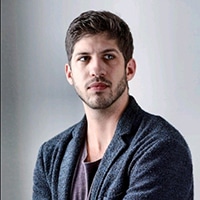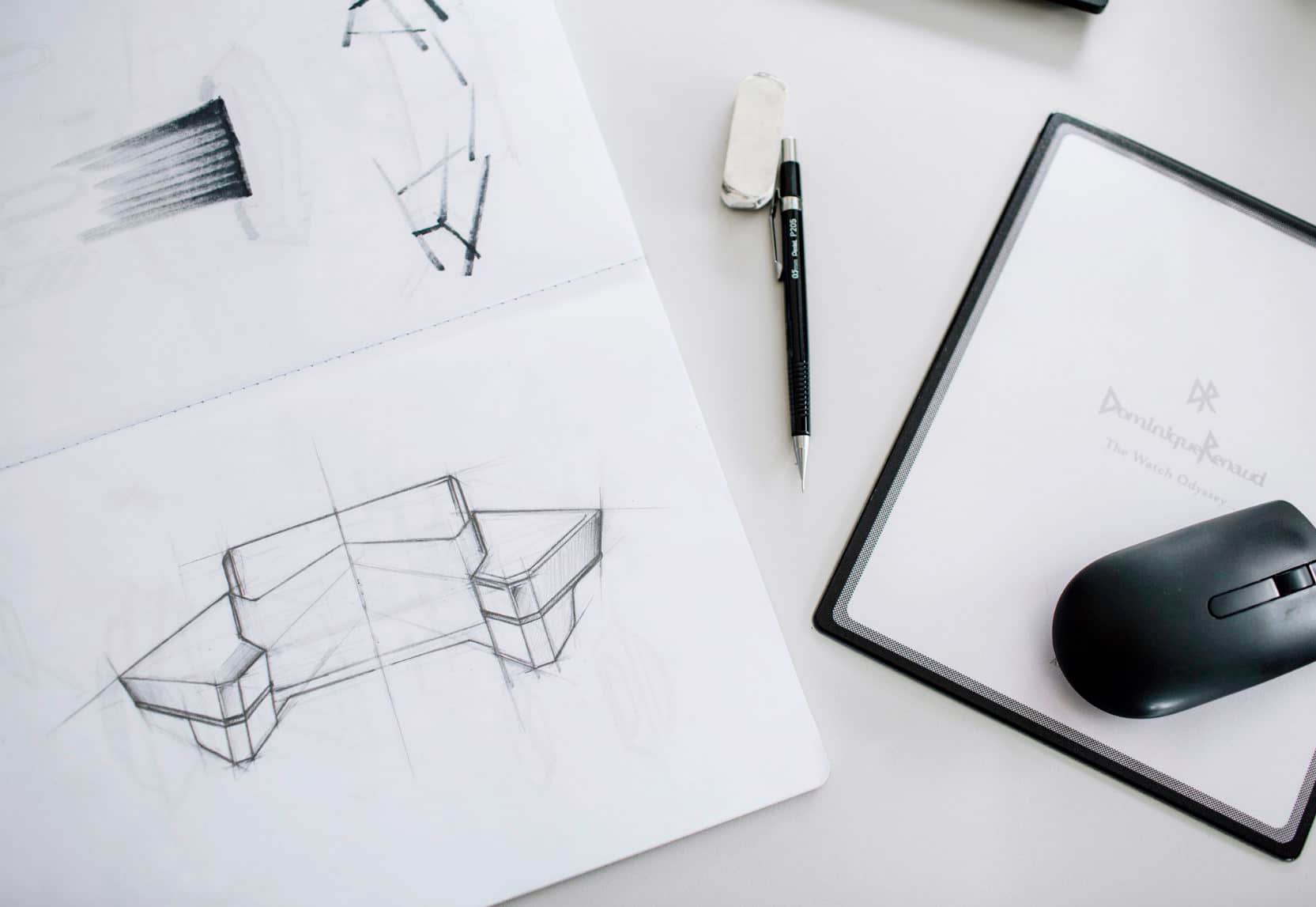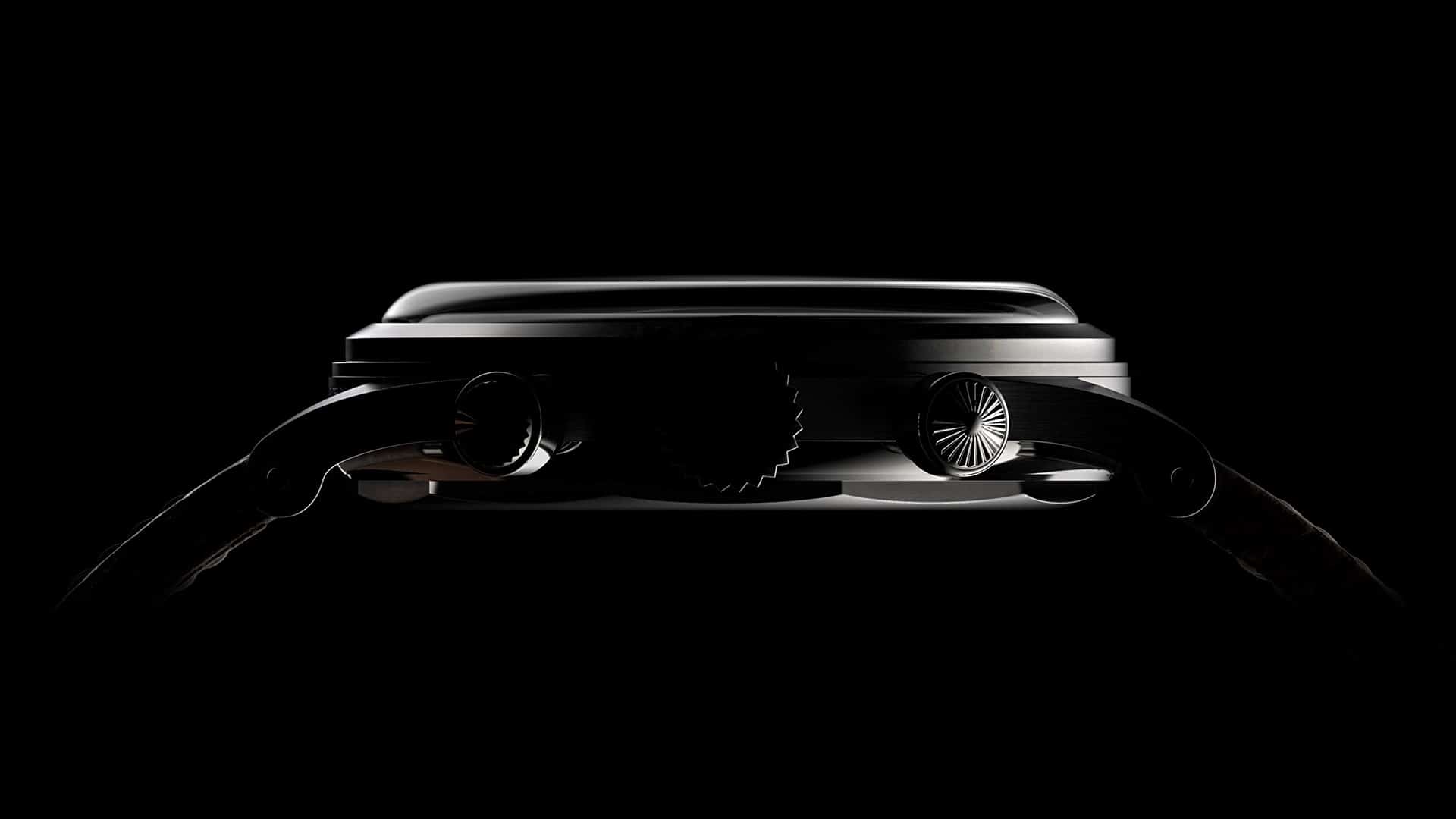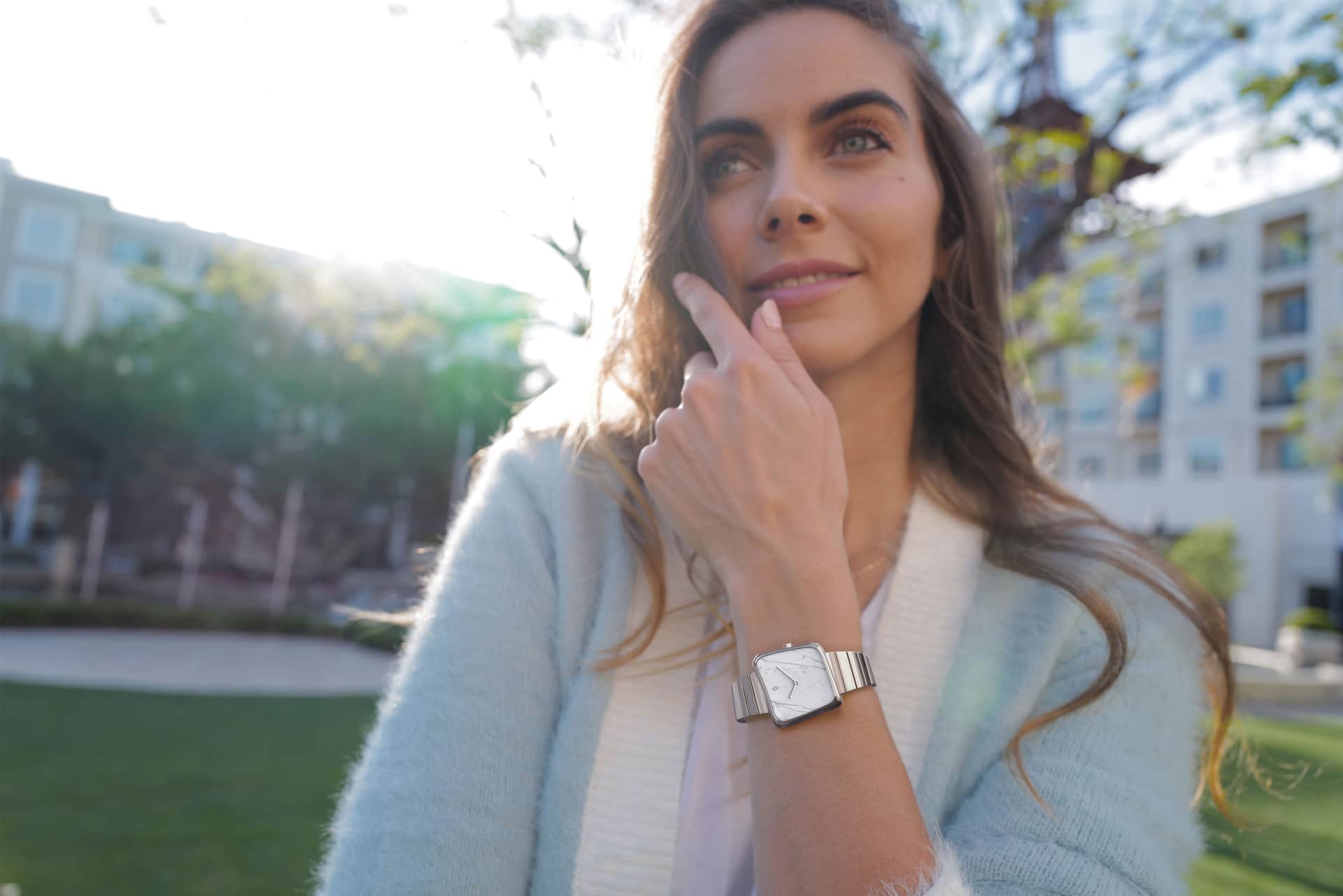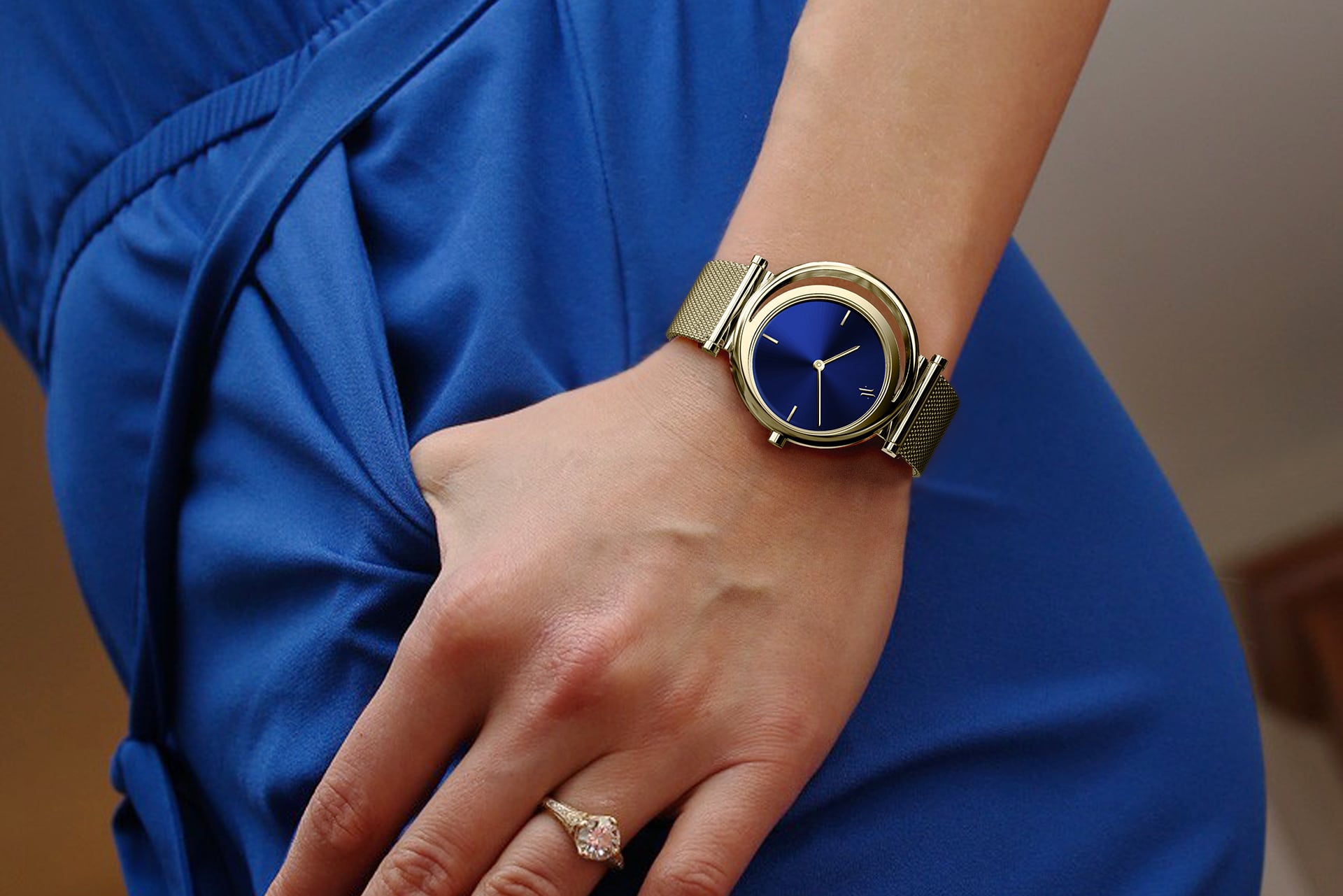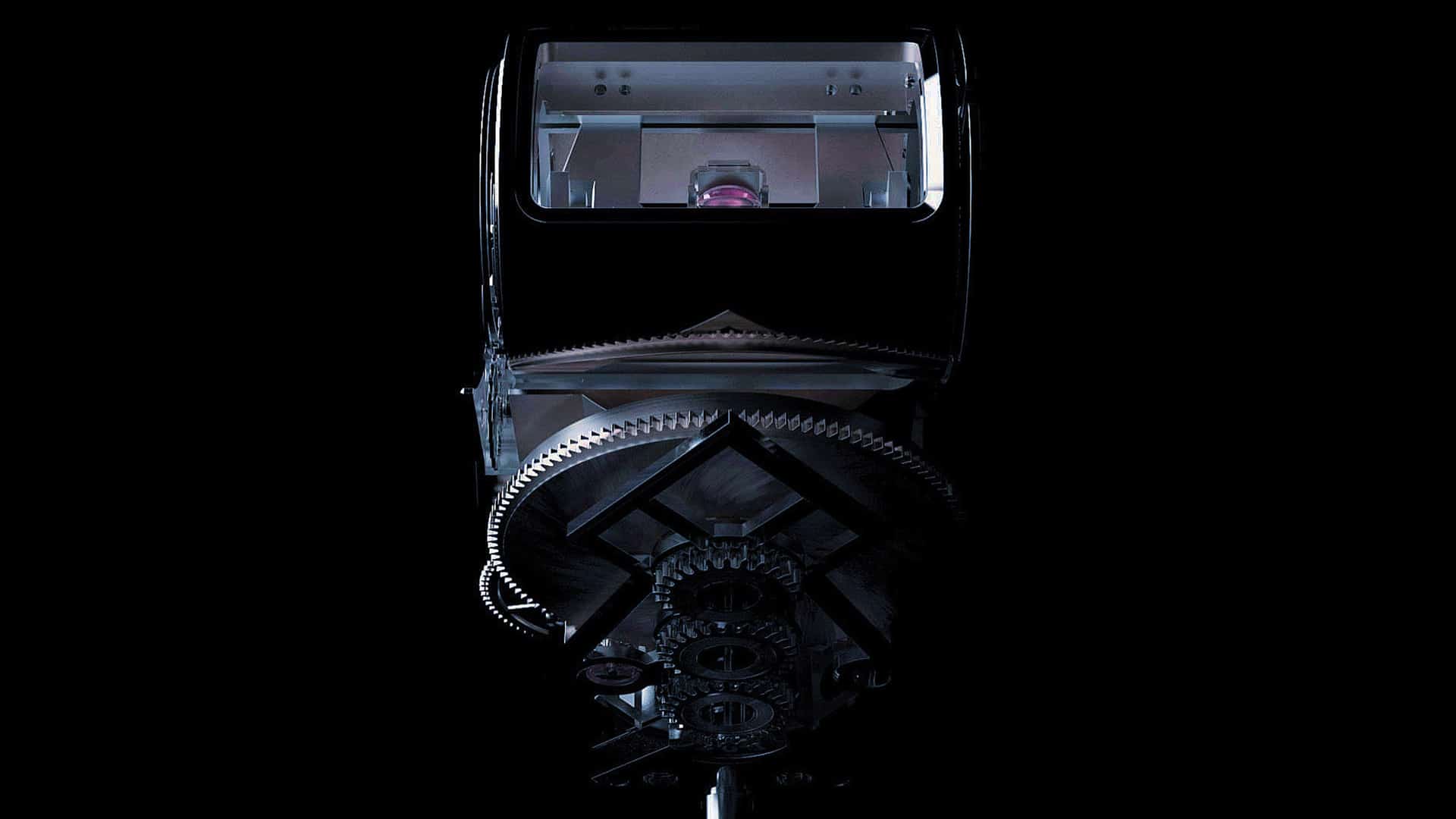Passionate about design, Andrea Furlan began his career with numerous internships in the greatest watchmaking houses. Throughout and since he has honed his skills and serves clients around the world in the creation of production, brand identity, synthetic imaging creation and more. KeyShot has helped on multiple levels across projects, in his studio, and for his new watch brand. Here, Andrea tells us how it all started and why he uses KeyShot.
What sparked your interest in Industrial Design?
My father passed along his passion for drawing. He was a technical designer at that time. I learned to draw on his drawing board, also with his Rotring pens on tracing paper by scratching the paper with a cutter to erase the ink. I loved cars and dreamed of being able to draw them later. My father took me to visit the Turin Design Institute (IED in Italy), but I quickly realized there were too many car designers on a project when creating a concept car, so I became interested in the world of watchmaking, which is very present in Switzerland.
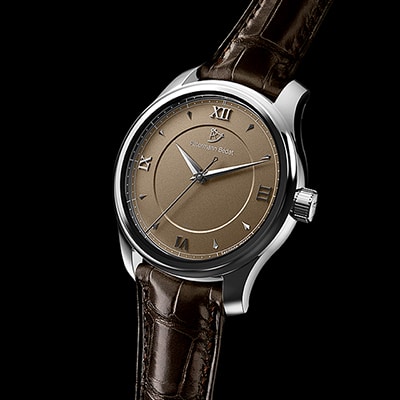 After my first internship at Chopard (a luxury watch and jewelry brand), I was immediately fascinated by this world. And where a single designer was in charge of the design from A to Z and could also manage part of the development. Since this first internship and others (Hublot, Sarcar, HD3 Complication and Dominique Renaud), I’ve never stopped going down this path. First by finishing my Bachelor’s degree in Industrial Design at the ECAL (University of Art and Design in Lausanne, Switzerland), then by working for an independent watchmaker, because this was my passion from a very young age. I was therefore able to learn alongside a master watchmaker all the workings and details of a very high-end and complex watch, finished by hand, with the help of state-of-the-art technology. We were a team of only four people, it was a chance to be at the side of the engineer and the watchmaker at the same time. To be able to listen, to learn why this shape of screw changed the weight of the watch, where the shape had to be reworked while respecting the tolerances. It was very instructive and being in the depths of a project was something unforgettable.
After my first internship at Chopard (a luxury watch and jewelry brand), I was immediately fascinated by this world. And where a single designer was in charge of the design from A to Z and could also manage part of the development. Since this first internship and others (Hublot, Sarcar, HD3 Complication and Dominique Renaud), I’ve never stopped going down this path. First by finishing my Bachelor’s degree in Industrial Design at the ECAL (University of Art and Design in Lausanne, Switzerland), then by working for an independent watchmaker, because this was my passion from a very young age. I was therefore able to learn alongside a master watchmaker all the workings and details of a very high-end and complex watch, finished by hand, with the help of state-of-the-art technology. We were a team of only four people, it was a chance to be at the side of the engineer and the watchmaker at the same time. To be able to listen, to learn why this shape of screw changed the weight of the watch, where the shape had to be reworked while respecting the tolerances. It was very instructive and being in the depths of a project was something unforgettable.
After those years, I travelled to Asia and Los Angeles, meeting with key people in the e-commerce industry and big manufacturing watch companies. It was a chance for me to understand this world also, not only the ultra luxury swiss watch industry but also the mass production universe. And being in contact with the finest suppliers there has been a turning point for my future career. When I came back to Switzerland and created my Design Studio, my customers have been amazed by the quality of the prototypes they received thanks to the fact I chose and saw by myself for months the people I wanted to work with.
What’s unique about the approach you take to a design project?
Putting the customer at the center of the thinking process is very important and primordial, understanding and refocusing his needs around the product and never forgetting for whom we design. But even more, I focus on the experience more than the product. What is around the product, its universe, its history, what it tells and how it will evolve in the real world. Telling a story about a product is what fascinates me above all else. Thinking also about the many manufacturing processes that go into the creation is an important element in order to design an object that is both aesthetically pleasing and feasible by the different parties who will design the object. The designer must also be there to facilitate the work of the engineers or prototypists and propose ingenious solutions, such as adapting the initial design to facilitate extraction into a mold or a different way of fitting the elements together, which is more efficient, less costly and faster. I would say that you have to think about a project as a whole, also about how it can be distributed on the market, how it will be sent to the client and what experience/history the designer wants to share with the client.
What is your primary 3D modeling software?
When I was a student we used Rhino 3D, SolidWorks, and Maxwell Render. I have since continued with Rhino 3D, which is enough for me to model scenes and certain objects. For more complex objects like watches, we use engineers because we have the right tolerances and dimensions directly, it’s faster to create directly with a proportionally correct object. For anything like watch straps, for example, I use Blender to model the seams and give more “life” to my object.
Where in your process is KeyShot used?
KeyShot is used on several levels. I use KeyShot on a daily basis to test volumes in an environment, to test the light that is deposited on the object for example. The ease of the program is disconcerting, it is extremely easy to use and the KeyShot team improves the program year after year. My process is as follows: I use KeyShot at the beginning of the projects, to test surfaces, materials, to test the object in a precise universe. I use KeyShot at all levels of the process, whether it is for social media (Instagram stories, square posts) or when I don’t have the right equipment or lights for photo shooting. I will recreate the studio virtually and integrate different lights. I like to mix the real photo with KeyShot, integrating the object in a real photo, when I am waiting for prototypes, for example. KeyShot helps me produce more, faster and imagine new scenarios, because the solutions are almost unlimited.
What are some projects you have used KeyShot on?
I started using KeyShot six years ago on my first job. We didn’t study it at university, so I had to learn it myself. Thanks to the many videos and online training courses, I was able to start using it for a watch brand called Dominique Renaud (the watch is called DR01 Twelve First, because only 12 watches were produced). We sold the watch on simple 3D renderings (at the time my renderings were not at all at the same level), but thanks to KeyShot among others we were able to sell a prototype, which allowed the buyer to change the colors, to see in 3D his future watch, and to be able to change the aesthetic details with disconcerting ease. This watch has several hundred parts. It took me some time to create the right materials for this project. Another project was with an artist designer from Los Angeles, creator of the VANNA Los Angeles brand. I was able to help this woman further project herself into her brand by creating several 3D wrist shots, then using the renderings from KeyShot on social networks as well as on the website. This helped make her aware of the product in a real environment and situation. I am now using KeyShot for my Design Studio and for my own watch brand, Furlan Marri, which will launch in early 2021. Most of the website visuals, animations and our Instagram posts/stories for our future launch are made using KeyShot.
Overall, how has KeyShot helped save time, money and/or improve quality?
KeyShot saves a lot of time with its ease of use but can be very effective at all levels of the project, whether it’s for pre-prototyping visualization, marketing or product distribution. Before starting the prototyping phase, I like to visualize the product one last time, in a virtual studio or in a real environment, to make sure that the product corresponds to the customer’s wishes. This saves me time and money. Then, in marketing. Photoshooting can be expensive depending on the project and can be quite time-consuming if you have to present the project to the customer fairly quickly. This is where KeyShot can help. By creating realistic scenes (for example, a photoshoot in Dubai), using the city’s lights to create an environment. Or renderings for the website’s product pages, creating various collections of different colors and materials in record time. This allows me to be present at several levels of a project, to have a global vision and more time to test various scenes, to experiment and design a project quickly. Of course, I also use real photography, but I find that KeyShot brings a significant added value to all levels of the project.
What advice would you give to others interested in doing what you do?
KeyShot is an incredible platform for designers, artists, engineers and marketing people alike. It allows you to experiment, visualize and build your brand, saving you time and allowing you to be present on several levels of the project. Train and learn daily, read books and use all the KeyShot resources at your disposal to acquire the know-how that will allow you to develop your knowledge. I still have a lot to learn on many subjects. KeyShot has fascinated me for many years, there is so much to discover. Thank you to the KeyShot team who are constantly improving the program again and again.

See more at andreafurlan.ch


